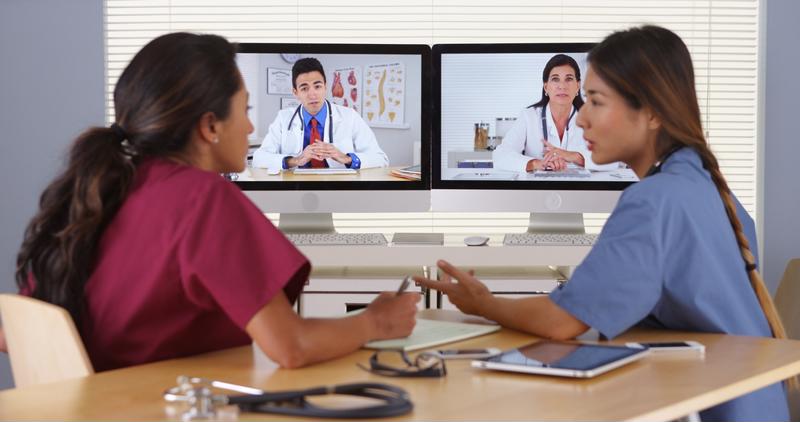
Future of medical IoT uncertain after new security flaws are discovered
By Max BurkhalterOctober 29, 2019
Over the past few years, the internet of things and connected technologies have become key drivers of change throughout nearly every commercial space. And although the health care industry has largely taken a slow-roll approach to IoT adoption, many in the field are optimistic about its potential to transform patient care for the better. As pointed out by a recent article from MedTech Intelligence, the demand for low-cost health care solutions is a major factor in the push for wireless medical applications, but what specific use cases are the most promising for patients and caregivers alike?
The rise of telehealth
One of the most useful applications for IoT tech in the health care field is remote patient monitoring, which is often discussed in conjunction with telehealth. According to the Mayo Clinic, telehealth refers to the "use of digital information and communication technologies, such as computers and mobile devices, to access health care services remotely and manage your health care." Generally speaking, IoT devices and mobile apps allow health care providers to monitor their patients' conditions in real-time, enabling caregivers to intervene before a minor issue becomes a medical emergency. This not only increases the chances of positive patient outcomes, it also improves the overall quality of care and patient comfort. In terms of specific objectives, the Mayo Clinic points to five key goals driving telehealth and IoT integration:
- Making health care accessible to everyone, including patients who live in rural or isolated communities.
- Improving medical services to be readily available and accommodating to patients with limited mobility and/or transportation options.
- Providing patients with better access to their medical specialists, health care records and test results.
- Enhancing communication between patients and their medical specialists, primary care physicians and other health-related professionals to improve coordination.
- Enabling patients to practice self-management of their chronic and/or short-term health issues.
Despite the optimism surrounding IoT-based medical systems, they are still far from perfect. For one, every patient has their own level of experience with technology, meaning some may be unfamiliar with how to effectively use their telehealth platform. This can be especially disruptive when several different remote monitoring tools, web applications and communication channels are being used simultaneously, HealthTech Magazine reported. Patients must remember login credentials for every platform and understand where to go for the information they're looking for, which may require guidance that health professionals simply cannot provide. While some recent advancements have aimed to solve this problem, such as "single sign-in" applications and other authentication tools, there is still a long way to go before telehealth can meet its stated objectives.

New zero-day exploits in medical IoT raise concerns about patient security
Deploying medical IoT at scale has been a bit of a nightmare for the health care industry, as many of the devices in use today lack the robust cybersecurity features needed to maintain patient privacy. On October 1st, the U.S. Food and Drug Administration released an urgent advisory warning patients, health care providers and tech manufacturers that several vulnerabilities had been discovered in IPnet, a third-party software component used for endpoint networking. According to the researchers who first identified the vulnerabilities, these security flaws make it possible for cybercriminals to take control of IoT medical devices, update settings and even disrupt or halt their normal functions. For patients with IoT heart monitors or other implanted devices, these exploits could be potentially life threatening.
Data theft is another pressing issue that must be solved before medical IoT can truly revolutionize patient care. According to a report from the Identity Theft Research Center, the health care field suffered the second largest number of data breaches in 2018, along with the highest rate of exposure per breach. In total, nearly 10 million sensitive patient records were exposed, which is nearly double the number of leaked records during 2017. Unfortunately, the rapid increase in hacking and data breach attempts will likely grow as more patients start using online platforms and IoT devices to manage their health.
Currently, cybersecurity concerns are the primary obstacle to widespread adoption of IoT across industry lines. What makes the health care field unique is the sheer volume of personal information involved and the consequences of lackluster security. While a data breach at a manufacturing facility may put proprietary data at risk, a single security incident at a hospital could jeopardize the lives of thousands of patients. That's why Perle is proud to work alongside health care organizations to find sustainable networking solutions. Our industrial-grade Ethernet switches and reliable serial servers have helped health care providers bolster their system infrastructure and secure patient records. Read some of our customer stories to learn more.



